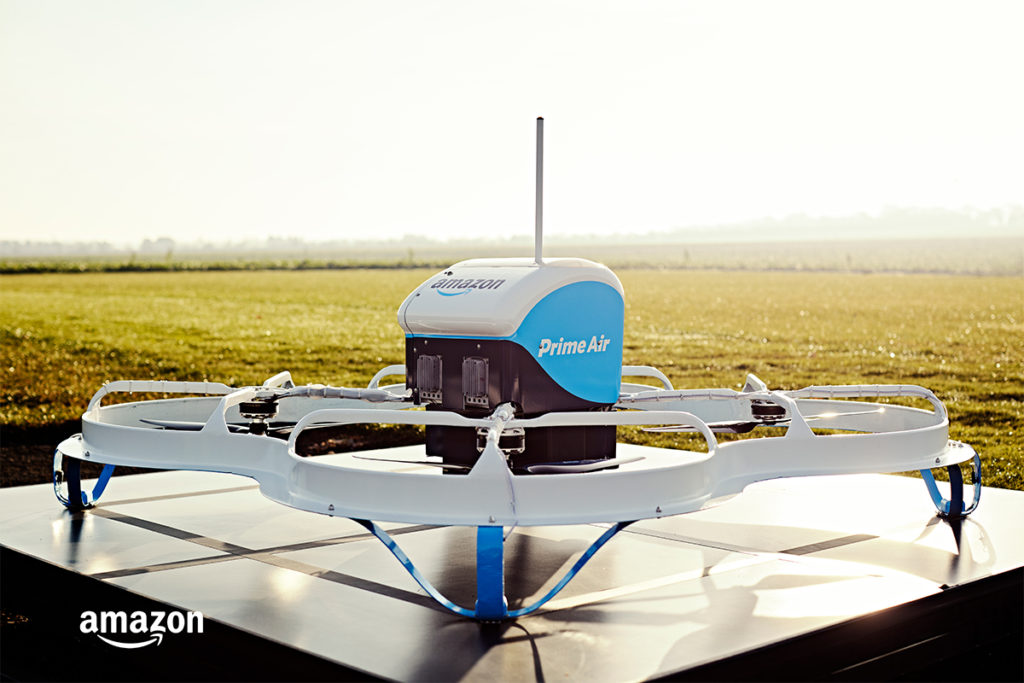Update (April 25, 2019):
The Federal Aviation Administration (FAA) cleared Wing Aviation, an offshoot of Alphabet Inc.’s Google, to start delivering goods by drones in Virginia later this year. Marking the first time the FAA has given a company US air carrier certification.
“This is an important step forward for the safe testing and integration of drones into our economy. Safety continues to be our No. 1 priority as this technology continues to develop and realize its full potential,” said US Transportation Secretary Elaine Chao in a press release.
The certification means Wing can begin delivering goods commercially in flights beyond the visual line of sight and over people, the FAA said in an announcement Tuesday.
Wing has recently begun commercial air delivery service in Australia, which the FAA says has demonstrated that its operations met the agency’s safety requirements.
With Wing planning to begin commercial package delivery in Blacksburg, Virginia later this year, it seems the sky is the limit for other companies hoping to do the same.
Originally published on March 12, 2018:
The concept of drones flying to customer houses to deliver e-commerce goods may seem like a sci-fi fantasy but drone delivery might become a common occurrence in the UK by 2019, and in the US in the near future. On Monday, the UK’s National Air Traffic Services (NATS), the country’s leading air traffic services provider, and traffic management solutions company Altitude Angel, announced their partnership in creating a foundation for drone delivery systems to be successfully integrated in the UK.
“It is vital that the UK puts in place the right infrastructure to enable this country to be at the forefront of this exciting industry whilst protecting the safety of conventional aviation. The increasing popularity of commercial drone operations and the growing number of drone-related incidents makes it essential that we take steps now to help make this happen and this new partnership will get the UK’s unmanned traffic industry off to a safe, flying start. We are excited to be partnering with Altitude Angel in this innovative venture” said David Harrison, NATS Director of Safety in a press release.
The concept of drone delivery became popular in the e-commerce industry after Amazon dazzled the world with their first successful Amazon Prime Air delivery – the company’s new drone delivery service –to a customer in the UK in 2016. In December of that year, the company used one of their autonomous drones to deliver an Amazon Fire TV and a bag of popcorn to a customer in Cambridge and according to the company, the drone delivery took just 13 minutes from the time the customer clicked the “order” button.
This delivery system was not able to go mainstream because the drones fly outside of a human’s line of sight which is illegal in the UK. There was also an increase of drone related air traffic incidents which had manned aircraft professionals concerned about the safety aspect of drone delivery. The new partnership between NATS and Altitude Angel will lay a foundation for a future in which lower level airspace access can be granted to drone users digitally. This, in turn, would fully integrate drone delivery systems with existing manned aircrafts.
“Altitude Angel’s platform offers the level of safety and accuracy needed to enable regulators and ANSPs to feel confident that drone operations can be integrated safely, not just into our skies, but into existing aviation systems,” said Richard Parker, Founder and CEO of Altitude Angel.
The two partners believe that drone delivery systems could be put in place in the UK by as early as 2019.
However, this new delivery format will not just be exclusive to the UK for long. Google parent company Alphabet has been investing in their own drone delivery platform called Project Wing along with a traffic management system that could satisfy the Federal Aviation Administration (FAA) – the US airspace regulator. Currently, Project Wing’s drones are being tested within a pilot’s line of sight.
“We’re continuing to work hard to make UAS delivery a reality, transporting goods through the sky in a way that’s inexpensive, fast, and environmentally sensitive,” wrote James Ryan Burgess, Co-Lead of Project Wing in a company post.
Amazon is also working on implementing their Prime Air service in the US. In February of last year, the US Patent and Trademark Office granted a patent to Amazon for their new drone delivery method involving the use of parachutes in landing their packages. The patent will allow Amazon to keep their delivery drones high above consumer homes which would save time and energy compared to landing drones on the ground. In addition, keeping the drones in the sky will prevent dangerous collisions between the machine and people, children, pets or objects in a customer’s yard.
In order to prevent a package from blowing into a tree, power line or balcony, Amazon will be using a series of magnets, parachutes or spring coils to target their deliveries while in mid-flight. The drone will also monitor the descending package as soon as it is released to ensure proper landing. Depending on the environmental conditions, the drones will use radio communication to deploy a parachute, compressed air canister or landing flap to direct an off-course package.
However, similar to the UK, drone delivery’s biggest hurdle in the US is that automated flying machines without human supervision are illegal. This makes it unclear as to when this innovative delivery system will become a mainstream occurrence in the West.












Join or login to leave a comment
JOIN LOGIN